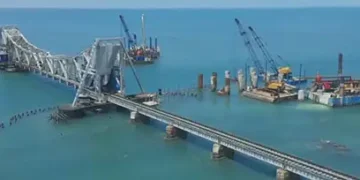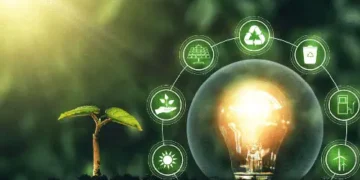Blitz Bureau
NEW DELHI: IN an unstable global environment, countries are increasingly focusing on their own interests, with ‘resource nationalism’ being at the core of national strategies. Prime Minister Narendra Modi’s emphasis on imbibing the spirit of a Swadeshi model of development in his longest Independence Day speech fits in perfectly with this context, though the immediate background was Donald Trump’s tariff fury on India. Aatmanirbharta (self-reliance) is the cornerstone of Viksit Bharat (developed India), Modi asserted, while flagging the various schemes to make the country self-reliant. Unperturbed by the high tariffs being imposed on India, he said his Government won’t accept any agreement that adversely affects India’s farmers, cattle-rearers, and fishermen.
Even in a milieu of ‘de-globalisation’, Trump’s extravagant tariffs are more a contingency than an abiding feature. However, it serves as a timely reminder of the need to brace ourselves for external shocks of high magnitude. India is a capital-scarce country, and it needs to strategise well to boost money supply and ensure efficient deployment of capital for productive capacity creation. Its natural resources are robust, but not all-encompassing or efficiently exploited.
As it hoisted the tricolour on its 79th Independence Day, India stood proudly as a confident, resilient, and rising nation. It is not just the world’s largest democracy, but a country that has crafted its destiny quite successfully since it attained independence in 1947. Notwithstanding the current headwinds of Donald Trump’s tariff war, it has weathered many storms in the past. Today, no one can stop India’s rise. One may recall the sanctions by US in 1998 after the Pokharan nuclear test during the Atal Bihari Vajpayee Government, or the US’ role in sending its seventh fleet in 1971.
Through the past decade, India’s GDP has more than doubled. It is projected to touch $4.19 trillion in 2025, making it the fourth-largest economy, only behind the US ($30.5 trillion), China ($19.2 trillion), and Germany ($4.74 trillion). Measured in purchasing power parity (PPP) terms, India is already the world’s third-largest economy at $17.65 trillion, trailing only China ($40.72 trillion) and the US ($30.51 trillion). All this is a reflection of rising aspirations and a strong resolve to regain India’s civilisational legacy.
Since Independence, poverty levels have plummeted, while literacy, life expectancy, and women empowerment have seen transformative leaps. From Chandrayaan’s historic landing to the trailblazing Mars mission Mangalyaan, India has staked its place at the frontiers of space exploration. The meteoric rise of the Unified Payments Interface (UPI), processing over 10 billion transactions each month and inspiring fintech innovations worldwide, reflects a digital revolution.
Indian-origin leaders such as Sundar Pichai, Satya Nadella, Indra Nooyi, and many more lead some of the most influential corporations, underscoring India’s intellectual and entrepreneurial footprint far beyond its borders. Lal Bahadur Shastri’s call of ‘Jai Jawan, Jai Kisan’ later enriched by Vajpayee’s ‘Jai Vigyan’ (Hail Science) and, more recently, by Modi with ‘Jai Anusandhan’ (Hail Innovation), reminds us that India’s progress is rooted in science and technology. India Story is a work in progress, which the world watches with awe. It has lessons for many countries in Asia and Africa; and in many high-tech sectors, it competes with the best. The Modi Government’s journey towards a Viksit Bharat by 2047 cannot be stopped or hindered by any world power.
































